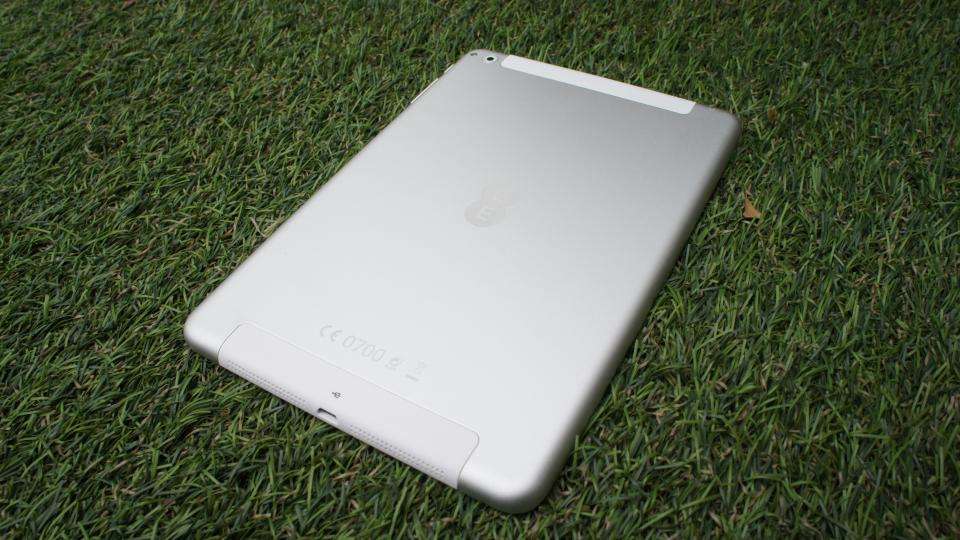EE doesn't have the best track record when it comes to its own-brand tablets, as both the EE Harrier Tab and EE Eagle were distinctly average Android tablets that couldn't match their respective rivals when it came to overall performance. Sadly, the same could be said of its latest 4G-enabled tablet, the EE Jay, as this iPad Mini -alike certainly has the looks to compete with its iOS competitor, but lacks the speed to make it a viable alternative.
At least EE's got the pricing right, though, as it's currently available for just £120 on EE's Pay As You Go service. This gets you 5GB of 4G data for 30 days, but you'll need to keep buying add-ons every month (or whenever you need them) to carry on surfing the web and streaming music and videos on the move once this has expired. Otherwise, the Jay will function like a regular Wi-Fi tablet.
Alternatively, you can buy one on contract for £30-per-month with an upfront cost of £18.50. That gets you 10GB of data each month and takes the total cost to £474.50 over two years. That sounds like a lot, but compare that to EE's iPad Mini 4 contract prices (which offer the same amount of data and start at £31.50-per-month with an upfront cost of £150), and you're saving yourself over £400 over the course of two years.

Design
The EE Jay certainly has the edge on price, then, but it's the Jay's slimline design and metal chassis that really impress, as its build quality is absolutely superb for such a cheap tablet. Its plastic cellular strips are admittedly a little lacking in style, but its gorgeous chamfered edges and aluminium case certainly go a long way to make up for it.
You could almost mistake it for the iPad Mini 4 at a glance, and its meagre weight of 322g means it’s nice and light in your hands. However, there’s a reason why the Jay costs less than the iPad Mini 4, as both its screen and overall speed simply can’t compete with its iOS rival.
Performance
With a quad-core 1.0GHz MediaTek 8735M processor and 1GB of RAM at its disposal, the Jay is a mediocre multi-tasker at best. Scoring 436 in Geekbench 3’s single core test and 1,349 in the multi-core test, it’s only a fraction faster than Amazon’s £50 Fire tablet . To be fair, Android 5.1 Lollipop felt reasonably fast and responsive during everyday use, and it only tended to struggle slightly when I was switching between multiple apps at speed.
Its Peacekeeper score of 550 also wasn’t hugely impressive on paper, but general web browsing was relatively stutter free. It was quite jerky when browsing media heavy web pages, such as the Guardian’s homepage, but it’s still perfectly acceptable provided you’re patient with it.
Its gaming performance was more disappointing, as it managed just 83 frames (around 1.3fps) in GFX Bench GL’s offscreen Manhattan 3.0 test. Admittedly, this is hugely demanding test, but when I tried playing a round of Hearthstone, for example, animations were very stop-start and juddery. Simpler, 2D games were absolutely fine, though, as I was able to play titles like Angry Birds 2, Threes! and Temple Run 2 without too much fuss.
Battery life
The Jay’s battery life was also rather underwhelming, as its 3,600mAh battery managed just 6h 8m in our continuous video playback test with the screen brightness set to our standard measurement of 170cd/m2. This should be more than enough for a long car journey or flight - just don’t expect it to last much longer than that once you get to the other end.
Speakers
The stereo speakers aren’t much cop, either. It doesn’t help that they’re both located on one side of the tablet (or the bottom if you’re holding it in portrait), but the sound they produce is pretty tinny anyway and are almost entirely lacking in bass. They’ve got plenty of volume, but the sound tended to distort at higher volumes, so you’d be better off plugging in a pair of headphones when listening to music or streaming Netflix.
